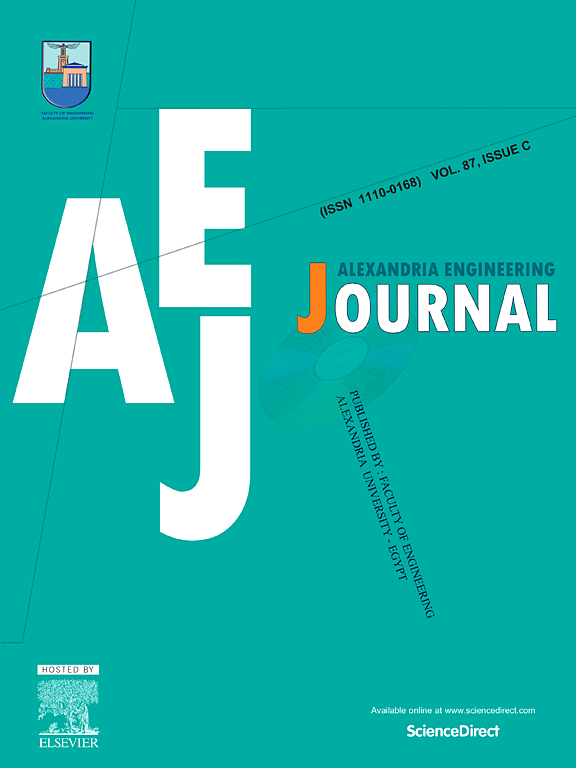LSEVGG:一种关注机制和轻量化改进的遥感景观图像分类VGG网络
IF 6.2
2区 工程技术
Q1 ENGINEERING, MULTIDISCIPLINARY
引用次数: 0
摘要
遥感景观图像分类对环境监测、土地管理和生态评价至关重要,但由于景观场景复杂的空间分布和高度的类内变异性,面临着严峻的挑战。传统的深度卷积神经网络,如VGG16,虽然有效,但计算量大,不适合部署在景观监测应用中常用的资源受限的平台上。在本文中,我们提出了一种新颖高效的CNN架构LSEVGG,它通过集成轻量级卷积技术和通道关注机制来增强经典的VGG结构。具体来说,我们的方法结合了深度可分离卷积和挤压和激励(SE)注意模块,以创建一个计算效率高且高效的景观特征提取模型。这些修改大大降低了模型的复杂性,同时增强了网络关注关键景观特征区域和捕捉独特地形特征的能力。在NWPU-RESISC45基准上的实验结果表明,LSEVGG达到了82%的Top-1分类准确率,比原来的VGG16和ResNet18分别提高了17%和11%。该模型在识别自然景观类别方面表现出特别强的性能,对于森林、海滩和草地等具有统一空间格局的类别,其SE注意机制能有效捕捉不同景观类型的独特纹理和空间特征,准确率达到88%-92%。此外,与VGG16相比,LSEVGG将参数数量减少了99.8%,浮点运算(FLOPs)减少了88%,突出了其在景观监测系统中的实时和边缘计算应用的适用性。这些结果证实,我们的LSEVGG模型在分类精度和计算效率之间提供了一个实用的平衡,使其非常适合现实世界的遥感景观分析任务。本文章由计算机程序翻译,如有差异,请以英文原文为准。
LSEVGG: An attention mechanism and lightweight-improved VGG network for remote sensing landscape image classification
Remote sensing landscape image classification is essential for environmental monitoring, land management, and ecological assessment, but presents critical challenges due to complex spatial distributions and high intra-class variability inherent in landscape scenes. Traditional deep convolutional neural networks, such as VGG16, though effective, are computationally intensive and unsuitable for deployment on resource-constrained platforms commonly used in landscape monitoring applications. In this paper, we propose LSEVGG, a novel and efficient CNN architecture that enhances the classic VGG structure through the integration of lightweight convolution techniques and channel attention mechanisms. Specifically, our approach incorporates depthwise separable convolutions and Squeeze-and-Excitation (SE) attention modules to create a model that is both computationally efficient and highly effective for landscape feature extraction. These modifications significantly reduce model complexity while enhancing the network’s ability to focus on key landscape feature regions and capture distinctive terrain characteristics. Experimental results on the NWPU-RESISC45 benchmark demonstrate that LSEVGG achieves a Top-1 classification accuracy of 82%, surpassing the original VGG16 by 17% and ResNet18 by 11%. The model exhibits particularly strong performance in identifying natural landscape categories, achieving 88%–92% accuracy for classes with uniform spatial patterns such as forests, beaches, and meadows, where the SE attention mechanism effectively captures distinctive textural and spatial features characteristic of different landscape types. Moreover, LSEVGG reduces the number of parameters by 99.8% and floating-point operations (FLOPs) by 88% compared to VGG16, highlighting its suitability for real-time and edge computing applications in landscape monitoring systems. These results confirm that our LSEVGG model offers a practical balance between classification accuracy and computational efficiency, making it well-suited for real-world remote sensing landscape analysis tasks.
求助全文
通过发布文献求助,成功后即可免费获取论文全文。
去求助
来源期刊

alexandria engineering journal
Engineering-General Engineering
CiteScore
11.20
自引率
4.40%
发文量
1015
审稿时长
43 days
期刊介绍:
Alexandria Engineering Journal is an international journal devoted to publishing high quality papers in the field of engineering and applied science. Alexandria Engineering Journal is cited in the Engineering Information Services (EIS) and the Chemical Abstracts (CA). The papers published in Alexandria Engineering Journal are grouped into five sections, according to the following classification:
• Mechanical, Production, Marine and Textile Engineering
• Electrical Engineering, Computer Science and Nuclear Engineering
• Civil and Architecture Engineering
• Chemical Engineering and Applied Sciences
• Environmental Engineering
 求助内容:
求助内容: 应助结果提醒方式:
应助结果提醒方式:


